#southern region (iceland)
Explore tagged Tumblr posts
Text

Suðurtröð, Selfoss, Iceland.
33 notes
·
View notes
Text


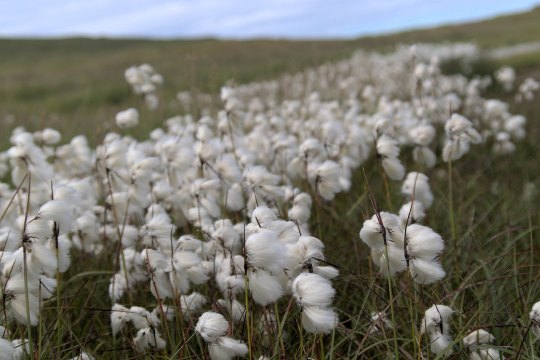

Iceland (2) (3) (4) by Rob Oo
Via Flickr:
(1) Skógafoss. (2) Arnarstapi. (3) Cotton grass. (4) Núpsstaður.
#rock formations#cloudy#rivers#houses#plantlife#grasses#cotton grass#turf house#iceland#southern region (iceland)#snæfellsnes#western region (iceland)#northwestern region (iceland)
13 notes
·
View notes
Text

Southern Region, Iceland
Robert Bye
3 notes
·
View notes
Photo

The pronoun "I" in traditional Scandinavian dialects
by jkvatterholm
I've aimed for this map to show the traditional area around 1900. It is similar in many ways still today, but some areas have shrunk a lot. Many Danes do no longer speak the genuine dialects for example, instead speaking standard Danish (incl. "jeg") with a local accent. This was starting already then of course, but on a much smaller scale. For example, Læsø, Djursland and Århus had already begun to move away from a at the time.
The spelling in the info should be close enough that IPA is not needed.
I've used tons of sources from this, including maps from regions or countries, trying to stitch them together and fill in any holes and correct discrepancies.
I can not separate forms with and without the final consonant (ja/jag) because that's impossible. Almost half the dialects may use both, depending on if the word is emphasised, on the end of a sentence or followed by a vowel etc.
Some spoken samples:
"ieg" in South-West Inland of Norway. (Press the speaker icon)
"i" area of Norway by Sweden.
Icelandic "ég" being pronounced "jeg".
Southern "i" area of Sweden.
Northern "i" area of Sweden.
The "je/ji" area besides it.
"je" on Swedish/Norwegian border.
Southern "æ" area of Denmark
Northern Jutland, Denmark
"e(g)" from Western Norway
"e" from Eastern Norway.
In standard languages:
Proto-Norse: ᛖᚲ (ek), ᛖᚲᚨ (eka)
Old Swedish: iak, iæk, iægh
Swedish: jag
Old Norse: ek, ec
Faroese: eg
Bokmål: jeg
Nynorsk: eg
Icelandic: ég
Old Danish: iak, iæk, iægh, æk, ak
Standard Danish: jeg
95 notes
·
View notes
Text
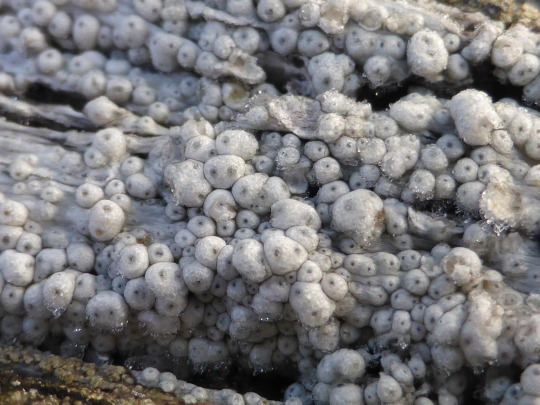





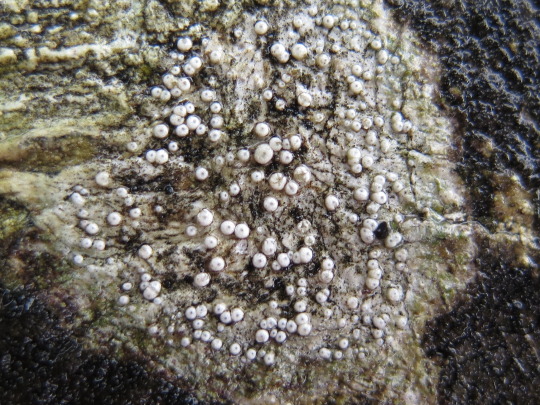
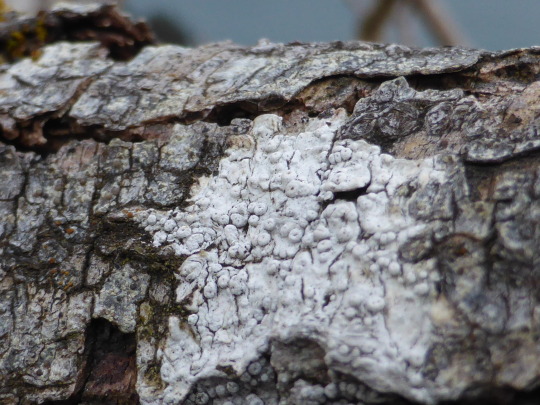


Ochrolechia xanthostoma
Birkiskilma
I am back on my BS, doing field work in Iceland for the next 2 weeks. Really hoping to get some good pictures of lichens to upload to iNaturalist so that more people have access to information on these precious little dudes. I will definitely be on the lookout for O. xanthostoma while I'm out there. This crustose lichen grows on tussock bases, moss, humus, lignum, and occasionally rock in upland regions closer on the far ends of the northern and southern hemisphere. It has a white, membranous to rimose thallus and wart-like apothecia with an immersed, orange-brown disc.
images: source | source | source
info: source | source | source
#lichen#lichens#lichenology#lichenologist#mycology#biology#ecology#fungi#fungus#symbiosis#symbiotic organisms#algae#trypo#trypophobia#Ochrolechia xanthostoma#Ochrolechia#I'm lichen it#lichen a day#daily lichen post#lichen subscribe#life science#environmental science#natural science#nature#naturalist#beautiful nature#weird nature#go outside#take a hike#look for lichens
135 notes
·
View notes
Text
Moth of the Week
Antler Moth
Cerapteryx graminis

The antler moth is a part of the family Noctuidae. It was first described in 1758 by Carl Linnaeus. This moth gets its name from the antler shaped mark in its forewings.
Description This moth species has brown forewings, with a “basal streak” of white that branches out. This mark may vary in size per moth. The forewings show a mirrored pattern of the base brown broken up by the branches and a few spots and lines of lighter brown. The forewing also may or may not have black streaks. The hindwing is dark brown with a white fringe.
Males are smaller than females with fluffier antennae.
Male Wingspan: 27 - 32mm (≈1.06 - 1.26in)
Female Wingspan: 35 - 39mm (≈1.38 - 1.53in)
Diet and Habitat The larva of this species feeds on grasses such as Deschampsia, Sheep’s-fescue (Festuca ovina), Mat-grass (Nardus stricta) and Purple Moor-grass (Molinia caerulea). It has also been found on sedges and rushes. When the larva population is concentrated enough, they can damage pastures. Adults feed on flowers such as thistles and ragworts.
This species is common through most of Europe. It’s northernmost reach is Iceland and above the Arctic Circle. It’s easternmost reach is Siberia and North Mongolia. This moth does not occur in the dry southern regions of Europe. It has been introduced to North America. Additionally, this species inhabits the Alps. They prefer habitats of grassland, favouring acid upland pasture, moorland and downland.
Mating Adult moths are seen flying from July to September. They presumably mate in this time frame.
Predators This moth flies during the day, especially in the north, warm weather, and early mornings, and at night. They are presumably preyed on by both daytime and night time predators like birds and bats. They are attracted to light. To protect themselves during the day, this moth hides in the grass.
Fun Fact The antler moth rises to an altitude of 2100 meters in the Alps.
(Source: Wikipedia, Butterfly Conservation)
#libraryofmoths#animals#bugs#facts#insects#moth#lepidoptera#mothoftheweek#antler moth#Noctuidae#Cerapteryx graminis
203 notes
·
View notes
Note
what's your headcanon human names for all 5 of them? :0
I think the Nordics have used various names throughout history! But they're probably all just variations of the same "base name," which has just changed with culture and current trends to keep up with the times.
Denmark: Magnus / Magni, Mange, Magne Magnus ("great") is a latinised version of the Old Norse name Magni ("mighty"). Various Scandinavian kings have been named Magnus, so the name has long been associated with the region. Mange is a Swedish nickname for Magnus, and Magne could be Denmark's alternative alias if he needs one Sweden: Björn / Bernwald Björn ("bear") is an Old Norse name still popular in Sweden. Perhaps in the Middle Ages, he may have used the name Bernwald ("bear" + "ruler") to fit in better with the German-speaking estates of society and have more of an international reach. Because his name means "bear," he can be teasingly referred to as Nalle, Bamse, or Baddi, all meaning "teddy bear" Norway: Sigurd / Sigurðr, Siward, Sjur Sigurd is a younger form of the Old Norse name Sigurðr ("victory"+ "guardian"), perhaps most notably associated with the Germanic legend of the dragon slayer. Siward is the English equivalent of the name. Sjur is the shortened form of the name Sigurd, so it may be his alternative alias Finland: Timo / Väinö, Väinämö Timo is a Finnish version of the name Timotheos ("honoring God") and perhaps a name he had to pick for himself after the introduction of Christianity. I like the idea of Väinö ("calmly flowing river") being his former first name and present middle name since it has the same origin as his canon surname Iceland: Eiríkur / Eiríkr, Erik Eiríkur is an Icelandic name, the younger form of the Old Norse name Eiríkr ("forever rich/powerful"). When in contact with outsiders, his name probably got simplified as Erik
Their surnames are not set in stone, and I rarely find myself needing them anyway. I don't think the Nordics would feel quite as attached to their surnames, as surnames in Nordic countries have traditionally been patronyms (and these guys don't have families in the traditional sense). Perhaps back in the olden days, the "surnames" they introduced themselves with were based on what was the most fitting and useful in a given situation - making up family associations, basing it off of their profession, or picking a surname based on where they lived (southern farm, northern bay, etc). But nowadays, they probably have preferred surnames they use for symbolic reasons; like Iceland going by "Ingólfsson" (based on Ingólfur Arnarson, the assumed first permanent settler of Iceland) or Denmark preferring the name "Andersen" to be associated with the most famous Danish author
Plus, I feel like their country names are actually more like honorary titles, and they don't really use them between each other (unless it's a nickname, like Sve, etc.). It's very much their culture. Nordic people tend to call their bosses, teachers, doctors, etc., by their first names, too. It's probably based on the cultural belief that this makes people more equal and cancels social hierarchy (Jante Law effect), so I have a hard time seeing the Nordic using honorary titles between friends and family
#hws nordics#headcanons#i just realized no one has asked that before. here you go then#i really like the name mathias for denmark but i have started to lean more toward magnus. just sounds more denmark specific somehow
100 notes
·
View notes
Text


A 4000-Year-Old Stone Box Grave Discovered in Norway
Archaeologists report an extremely important 4,000-year-old stone box grave has been unearthed in Western Norway, describing it as the most unique Stone Age find in Norway in the last 100 years.
This significant find, which archaeologists believe will provide information about how agriculture came to Western Norway, was discovered south of Vestkapp in Selje, Vestland. The grave is four meters long and over two meters wide.
It’s a sensational discovery and the most unique Stone Age finds in Norway in the last 100 years, says Morten Ramstad at the antiquities section at the University of Bergen.
The grave is a ‘hellekistegrave’, or stone box grave, a type of burial site that has previously only been found in Buskerud, Østfold, and Denmark, but never in Western Norway. Such a grave’s finding here is noteworthy and may help explain when agriculture, which first appeared in Norway circa 3950 BC, made its way to Western Norway.
The fact that this type of grave has not been previously found in Western Norway adds to the significance of the discovery.
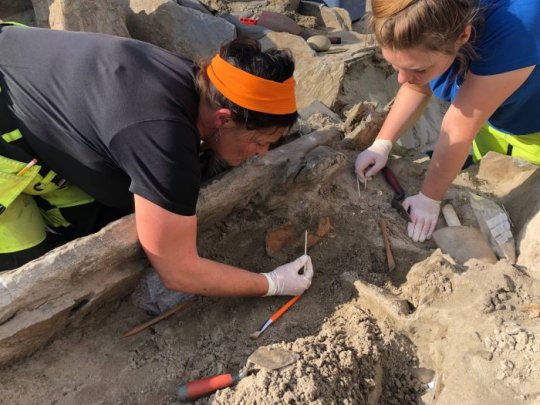
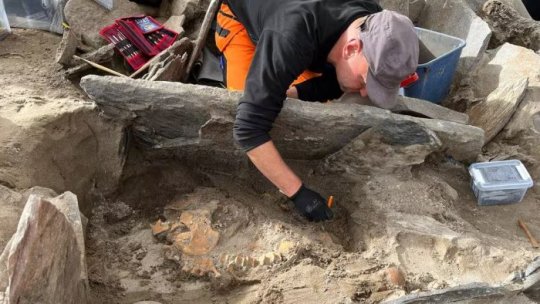
Researchers may be able to ascertain the individuals’ ages, places of origin, and methods of transportation to Western Norway thanks to the exceptionally well-preserved human bone material discovered at the site.
Following the retreat of the great ice sheets, the first inhabitants migrated north into what is now Norway around 10,000 years ago. They were hunter-gatherers who lived off of seafood and game, particularly reindeer. The first agricultural settlements appeared around the Oslofjord between 5,000 and 4,000 BC. Between 1500 BC and 500 BC, agricultural settlements gradually spread throughout southern Norway, while residents north of Trndelag continued to hunt and fish.


The Neolithic period, beginning in 4000 BC, marked the beginning of agriculture in Norway. The Migration Period saw the establishment of the first chieftains and the construction of hilltop forts. Norwegians began to spread across the seas to the British Isles in the eighth century, and later to Iceland and Greenland. The Viking Age also saw the country’s unification.
The discovery of the 4,000-year-old grave in Western Norway adds to our understanding of the region’s agricultural history. The grave’s exceptionally well-preserved condition, as well as the human bone material discovered within it, could provide valuable data for researchers.
By Oğuz Büyükyıldırım.
#A 4000-Year-Old Stone Box Grave Discovered in Norway#ancient grave#ancient tomb#ancient artifacts#archeology#archeolgst#history#history news#ancient history#ancient culture#ancient civilizations#stone age
118 notes
·
View notes
Text
Iceland's final McDonald's restaurant closed its doors back in 2009, and it has left people astonished to discover that one of the last meals ever served there is still remarkably well-preserved 🍔
In fact, the hamburger and fries have maintained their appearance so well that they are currently showcased at Snotra House, a hostel located in the southern region of the country.
Follow for more 👉 @mindset.therapy
The decade-old burger and fries have become such a captivating curiosity that the hostel even hosts a live broadcast of the meal on their website, reportedly attracting 400,000 viewers regularly.
How much would you pay? 👀

Lunch anyone??
87 notes
·
View notes
Text
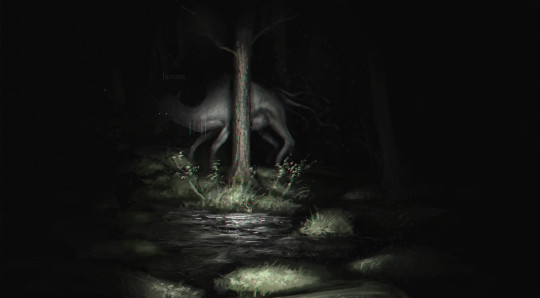
The Bäckahäst [Swedish folklore]
Evil aquatic horse spirits are a common trope in Germanic, Nordic and British folktales. The Scottish Kelpie, the Icelandic Nykur, the Norwegian Nøkk etc are all variations of (and derived from) the same story. In Sweden, this role is given to the Näck: an evil supernatural horse creature that convinces people to mount it and ends up drowning the victim.
In southern Sweden however, the Näck is replaced by the Bäckahäst, a similar monster. Originating in Skåne, this creature appears as a pale white horse (although this isn’t set in stone and some artists portray it as black) but otherwise resembles the Näck in most aspects, sometimes the two terms are even used as synonyms. But there are some regional differences. Interestingly, the Bäckahäst seems less dangerous than the more traditional Kelpie-like creatures. There are stories of these beings being tamed simply by putting a bridle on them, although they could also be forced into submission by using iron and steel. Once tamed, the creature could be used for ploughing or other agricultural activities which it excelled at because it needed neither rest nor food.
The name ‘Bäckahäst’ translate roughly to ‘stream horse’ or ‘brook horse’. The creature is also related to the Sjörå from northern Sweden.
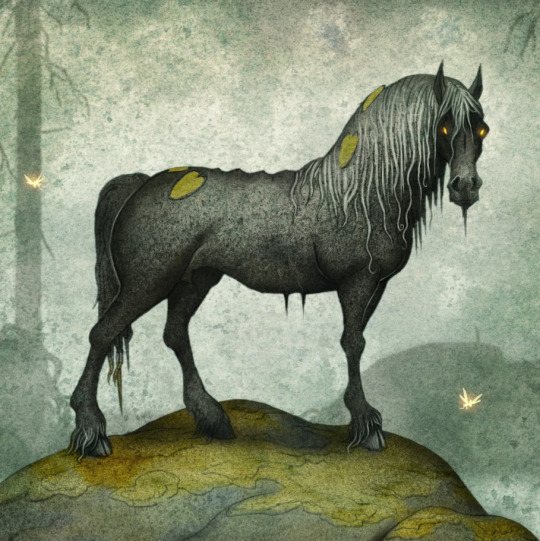
Egerkrans’ popular modern book ‘Nordiska Väsen’ describes the Bäckahäst as having a mouth filled with razor-sharp teeth and claims that it has a particular fondness for human children, preferring them over other prey.
Interestingly, according to Höök, an old Swedish tradition claims that Bäckahäst is only able to hurt unwashed people. Clean people who have recently bathed cannot be harmed by the monster. Supposedly, this is because supernatural monsters were traditionally associated with filth and a lack of hygiene. Being clean and hygienic would hold evil at bay, and you can’t really blame people for believing in that superstition because many stories of evil spirits at the time were associated with real diseases. If illnesses were the work of evil monsters and personal hygiene was an effective tool against illness, it only makes sense that proper hygiene was thought to also keep evil spirits at bay.
Sources: Egerkrans, J., 2013, Nordiska Väsen, B.Wahlströms, 126 pp. Lindow, J., 1978, Swedish Legends and Folktales, University of California Press, 219 pp. Höök, L. K., 2004, Vattnets renande och läkande kraft: Om hälsobrunnar, offerkällor och volontären Johan Lundin, Tio tvättar sig, Nordiska Museets Förlag, 47 pp. (image source 1: Jessica Hardarson on Artstation) (image source 2: Johan Egerkrans)
#Swedish mythology#Nordic mythology#creatures#monsters#aquatic creatures#mythical creatures#mythology#Kelpie
134 notes
·
View notes
Text

Samuel the nymph of the Huldufólk
My world takes many inspirations from the mythology and folklore of our real world. Samuel is one of my characters that threads a lot of these inspirations together.
There are two main “species” of peoples in Lower Earth, the humanoids (human-like), like all the other drawings I’ve shown you so far, and the nymphoids (nymph-like) like Samuel here. But nymphoids and humanoids are again separated into many cultures and groups. Samuel himself is one of the Huldufólk, which is actually mostly humanoid. These people are inspired by Icelandic fairies, famous for the invisibility powers (hence Hidden-Folk). Samuel has these powers himself, but is the first in their family to do so. His descendants come from more southern regions, who fled war and oppression between the Unseelie and Seelie fae “countries”. Secretly, Samuel is a cross-breed, as in his grandparents are both human and nymph. The only visual identification of this is that Samuel is a little short for a male nymph, at a mere 194cm (6ft 4).
#lower earth#original story#the other earth#digital art#fantasy#original character#art#my art#my writing#folklore#mythology and folklore#I like to think that male nymphs pretend to be 7ft like how human guys pretend to be 6ft#just that being a 7ft nymph is slightly more unrealistic than a 6ft human#Samuel is the type of character who used to be background#but all my friends liked them so much that he’s become more and more central to the plot
21 notes
·
View notes
Text
I have a weird, muddy opinion on how people on this site call The United States of America "USAmerica." Yeah, it works, and it removes any confusion about whether you're talking about the country or the landmass, but at the same time, it feels clunky? USAmerica just feels... idk, it's like you couldn't say it out loud without sounding goofy? You can say "the USA" out loud and it sounds good and makes sense, but at the same time the "the" makes it a bit awkward gramatically, and you can't just say "I'm from USA," but you can say, in text form, "I'm from USAmerica."
THEN there's the fact that people from that country are typically referred to as "Americans," and things from there as "American." When someone says "America," you don't think about the two connected continents the term could technically be referring to, you just think about the United States of America. It's an unusually "built" country within the region, made up of 51 smaller, unified nation-states that have combined into one very large, culturally and geographically disjointed country under one sprawling government, where every state, now functionally more of a province, retains the ability to have differing laws and economic policies, yet must answer to the grand government that controls them all as a whole, like if every country in Europe was ruled by one overseeing organization but were free to remain distinct as mini-nations rather than homogenized provinces. Two USAmerican states are far more different in legislation and culture than, say, two Canadian provinces are.
Given this, it makes sense for the country to simply be named "The United States of America." It's a bunch of states from America that are united into one big Voltron of a nation. Of course, though, you can't just say something like "this book is a great work of United States of America-ian literature," due to the way the English language works. Within the framework of English grammar, ideally, a country needs an adjective form of its name to concisely describe people and things from there, and while there are no hard rules as to how to go about that to my knowledge, there are a few different ways. You can apply a prefix to the country's name such as "ish" (British, Scottish, Turkish), "ian" (Brazillian, Russian, Indian), "ese" (Chinese, Japanese, Portuguese), "i" (Pakistani, Somali, Yemeni), or "an" (Guatemalan, German, Mexican), or if it sounds good you can just get funky with it and change a vowel or two (Norse, French, Dutch, Malagasy). And then there's Iceland with the "ic" (because they're special).
So BASICALLY, from THAT standpoint, using "American" as the USA's adjective makes sense. It flows well, does what it needs to. The problem, of course, is the overlap with the name of the landmasses. Technically, when one says "South American," they could be referring to either the continent of South America, or the south of the USA. Same with "North American." Now, nobody actually uses either of those terms to describe regions of the country, probably due to this overlap. A USAmerican could simply say "I'm from the north" or "I'm from a southern state," and you would understand given the context of them being a USAmerican. But then again, they couldn't just simply drop the country and compass-ional (whatever tf the term is) region in the same clause like people from any other country could without it sounding weird. "I'm from South France" makes sense as a sentence, as does "This plant grows in Northern Australia." "I was born in the South of the United States of America" is clunky and overly verbose, yet the lack of a proper country name without a "the" throws a wrench into that.
So what do we (typically) do? Just say "American" and let context do the work, clarifying if neccesary. "I'm from Southern America" obviously is not intended to apply to the continents, although it technically could. The reader, simply due to the context of knowing that South America is a continent and "America" usually refers to the USA unless otherwise stated, understands that the writer almost certainly means they're from a place like Texas or Louisiana, rather than Argentina or Chile. This way of writing/speaking is imprecise and requires unspoken context, but it gets the job done. America the country is a weird case in terms of its makeup, and that's reflected in its name. You're not referring to one country, you're referring to 51 micro-nations held together with one big fat federal government spread over them, like the thick plastic wrap holding a pallet of crates, boxes and sacks together as one shippable unit. And besides, nobody ever says "America" to refer to both continents, even though they technically could. They say "The Americas," because while technically one region, NA and SA are both very distinct and barely physically connected at all, held together by a single small landbridge (that has a canal though it now anyways, so you can't walk from one continent to the other without crossing water anymore).
So, in conclusion, idk, the term "USAmerica" removes the needless complexity of situational context, but it's somehow clunkier-feeling than the preexisting norm of just saying "America." I use and will continue to use the term USAmerica for brevity's sake since it's the norm on this site, but I'd certainly never use it anywhere else. America is an unusual country, and its name reflects that. A square peg in a language made of round holes, that can still fit if you turn it sideways a little. idk. I suppose the only real lesson here is that a) American exceptionalism is unintentionally portrayed in the language the country speaks, and b) English has a weird grammar system where things that are objectively correct within it sometimes don't "feel right" for no reason other than lacking succinctness.
#in case you couldn't tell I went up a dose on Vivance lmao#words pourin outta me like scraps of withered intestine out of a 2022 ivermectin true believer#like mayonaise onto a Subway sandwich after I ask the white girl behind the counter for “just a bit of mayonaise”#like [insert corny topical humor sequence no. 3]#English grammar#grammar#english#english language#grammar nerd#writing#usamerican
9 notes
·
View notes
Text
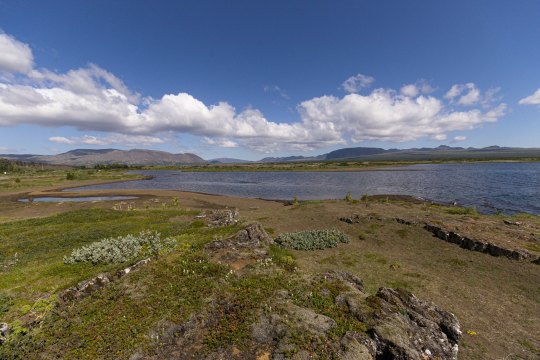



Iceland (2) (3) (4) by Rob Oo
Via Flickr:
(1) (2) Þingvellir. (3) Farm, Holt.
#coastal#wide sky#cloud formations#rock formations#countryside#farm#landscape#road stretching out#iceland#southern region (iceland)#capital region (iceland)
8 notes
·
View notes
Text
Pls vote & tell me in the comments where ur from!! I'm interested in my followers hihi
I'm from western europe❣️🇳🇱
19 notes
·
View notes
Text
Setting Blurb Map: Viceroyalty of Eurmerica

CorpEmp Macrocommunities:
Anglia et Cambria - Contains England, Wales, and the "Reconstructed Strathclyde" region of southern Scotland.
Arkassouri - A small Macrocommunity made up of Arkansas and. Missouri.
Benelux - A united Belgium, Netherlands, and Luxembourg. Less weed under Imperial rule.
Calizona - California (sans it largest three cities but most consider that an improvement), Arizona (with bits of New Mexico).
Cascadia - British Columbia, Idaho, Oregon, Washington. Once an anti-Imperial stronghold, now used to house veterans.
Deseret - Utah, with bits of its neighbors.
Dixica - Deep South and bits of Georgia, the Texans and Virginians cemented their alliance by conquering this area.
Eurmerican Arctic - Alaska, Yukon, NW Territory, Nunavut, and Greenland make up the homeland for the Eskaleut speaking peoples.
Gaelia - Ireland, Isle of Mann, Scotland (minus Strathclyde).
Germania - Germany, Austria, German Switzerland, Liechtenstein (plus bits of Poland and Czechia).
Grand State of Virginia - A reunited Virginia, Delaware, Maryland, and the Carolinas. Virginia was the first Warlord-era state to ally with Texas.
Greater Quebec - Quebec, bits of Ontario, Newfoundland and Labrador.
Ibero-Atlantic Islands - Azores, Canary Islands, Madeira.
Laurentia - The Rust Belt plus New Jersey.
New England - New England, the Maritime provinces, and eastern New York state. Another anti-Imperial bastion turned into veteran colonia.
Scandinavia - Denmark, Norway and Sweden (minus territory given to Eurasia's FennoSapmi).
Texan Tribal Federation - Texas, Oklahoma, and New Mexico. The homeland of CorpEmp's Rotthey dynasty.
The Plains - The American Midwestern states, and Canada's prairie provinces.
The West Latins - France, Italy, Portugal, and Spain. The Nouvelle Droite movement sought to reestablish the Roman Empire following WWIII. They managed to take the western half by the creation of CorpEmp.
Transappalachia - Kentucky and Tennessee. A Virginian vassal.
Non-Imperial Polities:
The Cordons Sanitaire - Berlin, Bremen, Chicago, London, Los Angeles, Toronto, and San Diego. These metropolitan areas were walled off and then used as "dumping grounds" for anyone that didn't want to be a part of CorpEmp. Rival political factions fight for control over each Cordon, but CorpEmp never allows them to have enough control to become a threat.
Green Consensus - Long Island. Eco-Socialists managed to takeover this Cordon Sanitaire during the War of 2100.
United Markets - Nevada, Seattle, and Vancouver. The Vegas casinos bribed the Texans to not invade their state, and MicroBucks were allowed to govern their own Cordon after Portland was given the Carthage treatment.
World Congress of Freedom - Iceland, San Francisco, Svalbard. These Cordons managed to get their shit together and wage war against CorpEmp in 2100 and force the CorpEmp into recognizing their legitimacy.
Macrocommunities with high Reserve presence - The Plains, Laurentia, Deseret.
Macrocommunitites with high Common Prosperity Coalition activity - Laurentia, Calizona, Anglia et Cambria, Benelux, West Latins.
8 notes
·
View notes
Text

https://www.reuters.com/world/europe/large-icelandic-volcano-eruption-misses-local-town-2023-12-19/
5 notes
·
View notes